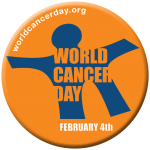World Cancer Day – Cancer Detectives in the Workplace
Posted on byToday is World Cancer Day. Around the world, 12.7 million people are diagnosed with cancer every year, and the number is expected to increase due to the growth and aging of the population, as well as reductions in childhood mortality and deaths from infectious diseases in developing countries (ACS 2011). Cancer is the leading cause of death in developed countries and the second leading cause of death in developing countries.
Cancer is a group of diseases characterized by uncontrolled growth and spread of abnormal cells. If the spread is not controlled, it can result in death.
Environmental factors (those that may occur naturally or may be introduced into environments where people live, work, and play), sometimes in combination with inherited susceptibilities, are important causes of cancer. These environmental factors can include a wide range of exposures, such as:
- Lifestyle factors such as nutrition and tobacco use
- Naturally occurring exposures to ultraviolet light, radon gas, and infectious agents
- Medical treatments, including chemotherapy, radiation, immune system-suppressing drugs, and other medicines
- Household exposures

- Pollution
- Workplace exposures
It has been estimated that 3-6% of all cancers worldwide are caused by exposures to carcinogens in the workplace (Driscoll et al. 2005; Rushton et al. 2012). Based on cancer incidence numbers in the U.S. (CDC 2014), this means that in 2010 (the most recent year available), there were between 43,695 and 87,390 new cancer cases that were caused by past exposure in the workplace. Worldwide, this translates to between 381,000 and 762,000 new cancers each year caused by occupational exposure. This is probably an under-estimate, partly because we don’t yet know about all of the agents in the workplace that may cause cancer. Cancers that occur as a result of exposures in the workplace are preventable, if exposures to known or suspected carcinogens can be reduced.
At NIOSH, we are conducting studies to identify physical and chemical agents in the workplace associated with the development of cancer. One way we do this is by carrying out epidemiologic studies among working populations to determine which workplace exposures might be linked to cancer.
Recent NIOSH cancer epidemiology studies:
Since 2012, NIOSH investigators have published findings from 24 studies of workplace-related cancer (see full list here). These studies have evaluated the risk of cancer from a wide variety of physical and chemical agents. Studies have included:
- particulates, fibers, and metals (such as diesel exhaust, asbestos, cadmium metal) and their association with lung cancer;
- chlorinated solvents and pesticides and their association with glioma;
- ortho-toluidine and its association with bladder cancer; and
- formaldehyde, polychlorinated biphenyls (PCBs), and ionizing radiation and their association with a variety of cancers, including leukemia.
- Other recently published NIOSH studies have focused on risk of cancer in specific industries (such as construction and microelectronics manufacturing), as well as occupations (such as coal miners, flight crew, and firefighters).
While too numerous to describe in detail in this blog, some of the key findings of these recently published studies include:
- Lung cancer was elevated in a cohort of non-metal miners and risk was significantly associated with diesel exhaust exposure (Attfield et al. 2012; Silverman et al. 2012). These findings were a key part of the recent decision by the International Agency for Research on Cancer (IARC) to designate diesel exhaust as a Group 1 (known human) carcinogen (IARC 2013).
- The incidence of bladder cancer was highly elevated among rubber manufacturing workers and was strongly associated with workplace ortho-toluidine exposure (Carreón et al. 2013). The National Toxicology Program used evidence from this study in its 2013 draft assessment of ortho-toluidine for the NTP’s Report on Carcinogens. The findings from this cohort study were also influential in IARC’s recent determination of ortho-toluidine to be a Group 1 carcinogen (IARC 2012).
- NIOSH researchers assembled a largest-of-its kind cohort of firefighters from three U.S. cities (Chicago, Philadelphia, and San Francisco). This cohort experienced higher than expected rates of overall cancer and of specific cancers, such as mesothelioma and cancers of the respiratory and digestive tract (Daniels et al. 2013).
- Recent findings about mesothelioma and lung cancer related to asbestos exposure have shed new light on the importance of size and shape on the carcinogenicity of that well studied agent. These findings may have important implications for future risk assessments of the hazards associated with asbestos exposure (Elliott et al. 2012; Loomis et al. 2012).
NIOSH’s occupational cancer research program has had a large impact on the national and international evaluation of the carcinogenicity of chemical and physical agents. The program has also influenced the development of risk-based exposure limit recommendations by NIOSH, OSHA, and other national and international organizations. We anticipate that findings from ongoing studies in the program will continue to be influential in these realms, and will remain an important tool for global cancer prevention into the future.
Future occupational cancer research
In 2009, IARC, the American Cancer Society, and NIOSH (through the National Occupational Research Agenda) convened an expert group of scientists to develop research recommendations to further evaluate the carcinogenicity of 20 potential carcinogens (IARC 2009; Ward et al. 2010). We are interested in your input on priorities for future epidemiologic research of potential occupational carcinogens!
One last thought: In addition to the cancer epidemiology program, NIOSH has a broad range of other work going on related to preventing occupational cancer – look for summaries of some of this other work in future blogs.
Mary K. Schubauer-Berigan, Ph.D.; Tania Carreόn-Valencia, Ph.D.; Avima M. Ruder, Ph.D.; Lynne E. Pinkerton, M.D., M.P.H.
Drs. Schubauer-Berigan, Carreόn-Valencia, Ruder, and Pinkerton are research epidemiologists in the NIOSH Division of Surveillance, Hazard Evaluations and Field studies.
Recent NIOSH Studies and Other Cited References
Posted on by


